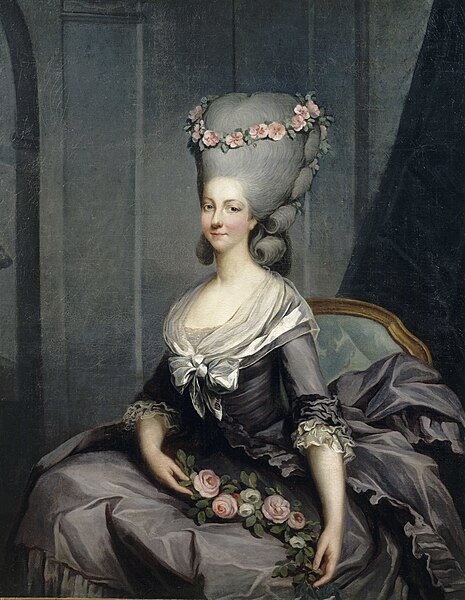In the Royal Household of the United Kingdom the term Woman of the Bedchamber is used to describe a woman attending either a queen regnant or queen consort, in the role of lady-in-waiting. Historically the term 'Gentlewoman of Her Majesty's Bedchamber' was sometimes used. In addition to the Women of the Bedchamber, queens have Ladies of the Bedchamber, and a Mistress of the Robes who is the senior female member of her household. The Women of the Bedchamber are usually in regular attendance, but the Mistress of the Robes and the Ladies of the Bedchamber are normally only required for major events and occasions.
Charlotte Clayton, Baroness Sundon, Woman of the Bedchamber to Queen Caroline
The Hon. Mary Morrison, who served as a Woman of the Bedchamber to Queen Elizabeth II from 1960 until the Queen's death in 2022, accompanying the Queen to the national D-Day commemoration in Southsea in 2019
A lady-in-waiting or court lady is a female personal assistant at a court, attending on a royal woman or a high-ranking noblewoman. Historically, in Europe, a lady-in-waiting was often a noblewoman but of lower rank than the woman to whom she attended. Although she may either have received a retainer or may not have received compensation for the service she rendered, a lady-in-waiting was considered more of a secretary, courtier, or companion to her mistress than a servant.
Princess Tatiana Alexandrovna Yusupova, a lady-in-waiting of the Imperial Court of Russia
Tang Dynasty court ladies on A Palace Concert painting
Marie Louise of Savoy-Carignan, Princesse de Lamballe was chief lady-in-waiting to Queen Marie Antoinette of France
Walking behind Queen Elizabeth II on a visit to Toronto in 2010 are two of her ladies-in-waiting: Lady Hussey (left) and Lady Farnham (right)






